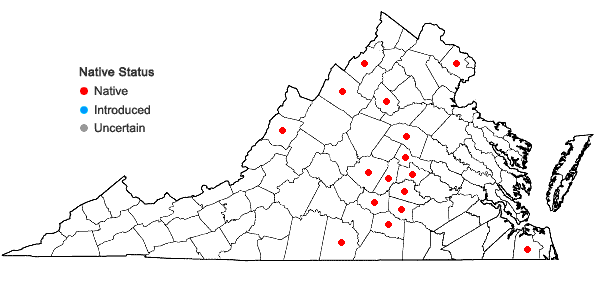Viola palmata L. var. palmata

Detail
- Family
- Violaceae
- Botanical Name
- Viola palmata L. var. palmata
- Common Name
- Cleft Violet
- Synonym(s)
- Viola palmata L. var. dilatata Elliott; Viola triloba Schw. var. dilatata (Ell.) Brainerd; Viola palmata L., s.l. (in part)
- Flora of Virginia Name/Status
- Viola palmata L., s.l.
- Comments
- Very incompletely mapped at present; the concept and name follow the treatment of violets by Flora of the Southeastern U.S. (FSUS) and the treatment of northeastern U.S. violets by Ballard, Kartesz, and Nishino (Journal of the Torrey Botanical Society, 150(1): 3-266, 2023. This var. has traditionally been referred to as Viola palmata var. dilatata; however, according to FSUS, "the type of V. palmata unambiguously refers V. palmata sensu stricto to the common Piedmont and upper Coastal Plain plant with deeply dissected leaf blades; var. dilatata Elliott is thus rendered a synonym of var. palmata, and the widespread northern taxon previously treated as var. palmata must use the earliest available name, var. triloba." Following Weakley's treatment, var. palmata is the southeastern element of the V. palmata complex and is distinguished by consistently having leaves deeply cut into linear-oblong segments. It will generally be found in the more eastern counties and should be more widely represented in the Coastal Plain than indicated; the few montane records may represent identification errors or hybrids. See also Comments under the provisional map for V. palmata var. triloba.
- Habitat
- More observations and specimens are needed to properly circumscribe the habitat of this variety. In the central Piedmont, it is typically associated with mesic to dry-mesic hardwood forests, growing in moderately to strongly base-rich soils.
- Native Status
- Native
To save this map, right-click (control-click for Mac users) on the map and choose "Save Image As...".

